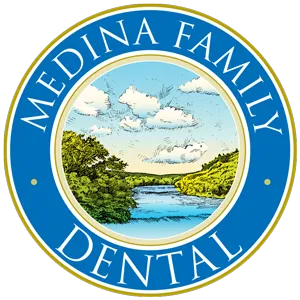DIAGNOSIS
DIAGNOSIS
Periodontal disease is diagnosed by your dentist or dental hygienist during a periodontal examination. This type of exam should always be part of your regular dental check-up.
A periodontal probe (small dental instrument) is gently used to measure the sulcus (pocket or space) between the tooth and the gums. The depth of a healthy sulcus measures three millimeters or less and does not bleed. The periodontal probe helps indicate if pockets are deeper than three millimeters. As periodontal disease progresses, the pockets usually get deeper.
As with most dental restorations, composite fillings are not permanent and may someday have to be replaced. They are very durable and will last many years, giving you a long lasting, beautiful smile.
Your dentist or hygienist will use pocket depths, amount of bleeding, inflammation, tooth mobility, etc., to make a diagnosis that will fall into a category below:
Periodontal disease is diagnosed by your dentist or dental hygienist during a periodontal examination. This type of exam should always be part of your regular dental check-up.
A periodontal probe (small dental instrument) is gently used to measure the sulcus (pocket or space) between the tooth and the gums. The depth of a healthy sulcus measures three millimeters or less and does not bleed. The periodontal probe helps indicate if pockets are deeper than three millimeters. As periodontal disease progresses, the pockets usually get deeper.
Your dentist or hygienist will use pocket depths, amount of bleeding, inflammation, tooth mobility, etc., to make a diagnosis that will fall into a category below:
Gingivitis
Gingivitis
Gingivitis is the first stage of periodontal disease. Plaque and its toxin by-products irritate the gums, making them tender, inflamed, and likely to bleed.
Periodontitis
Plaque hardens into calculus (tartar). As calculus and plaque continue to build up, the gums begin to recede from the teeth. Deeper pockets form between the gums and teeth and become filled with bacteria and pus. The gums become very irritated, inflamed, and bleed easily. Slight to moderate bone loss may be present.
Advanced Periodontitis
Gingivitis is the first stage of periodontal disease. Plaque and its toxin by-products irritate the gums, making them tender, inflamed, and likely to bleed.
Periodontitis
Plaque hardens into calculus (tartar). As calculus and plaque continue to build up, the gums begin to recede from the teeth. Deeper pockets form between the gums and teeth and become filled with bacteria and pus. The gums become very irritated, inflamed, and bleed easily. Slight to moderate bone loss may be present.
Advanced Periodontitis
The teeth lose more support as the gums, bone, and periodontal ligament continue to be destroyed. Unless treated, the affected teeth will become very loose and may be lost. Generalized moderate to severe bone loss may be present.
Bleeding gums– Gums should never bleed, even when you brush vigorously or use dental floss.
Loose teeth– Also caused by bone loss or weakened periodontal fibers (fibers that support the tooth to the bone).
New spacing between teeth– Caused by bone loss.
Persistent bad breath– Caused by bacteria in the mouth.
Pus around the teeth and gums– Sign that there is an infection present.
Receding gums– Loss of gum around a tooth.
Red and puffy gums– Gums should never be red or swollen.
Tenderness or Discomfort– Plaque, calculus, and bacteria irritate the gums and teeth.
Removal of calculus (tartar): Calculus is hardened plaque that has been left on the tooth for some time and is now firmly attached to the tooth surface. Calculus forms above and below the gum line and can only be removed with special dental instruments.
Removal of plaque: Plaque is a sticky, almost invisible film that forms on the teeth. It is a growing colony of living bacteria, food debris, and saliva. The bacteria produce toxins (poisons) that inflame the gums. This inflammation is the start of periodontal disease!
Teeth polishing: Remove stain and plaque that is not otherwise removed during tooth brushing and scaling.
The teeth lose more support as the gums, bone, and periodontal ligament continue to be destroyed. Unless treated, the affected teeth will become very loose and may be lost. Generalized moderate to severe bone loss may be present.
RELATED PROCEDURES
RELATED PROCEDURES
What is Periodontal (Gum) Disease?
Diagnosis
Treatment
Maintenance
What is Periodontal (Gum) Disease?
Diagnosis
Treatment
Maintenance
RELATED PROCEDURES
Dental Exams & Cleanings
Dental X-rays
Home Care
How to Properly Brush & Floss
Schedule A Visit With Us Today!
Questions?
Give us a call today!
Address:
1313 Petersburg Street
Castroville, Texas 78009
Email:
Hours:
Monday - Thursday 8am to 5pm
Closed Friday - Sunday
© 2025. Medina Family Dental.
All Rights Reserved. Opt-In Form.


